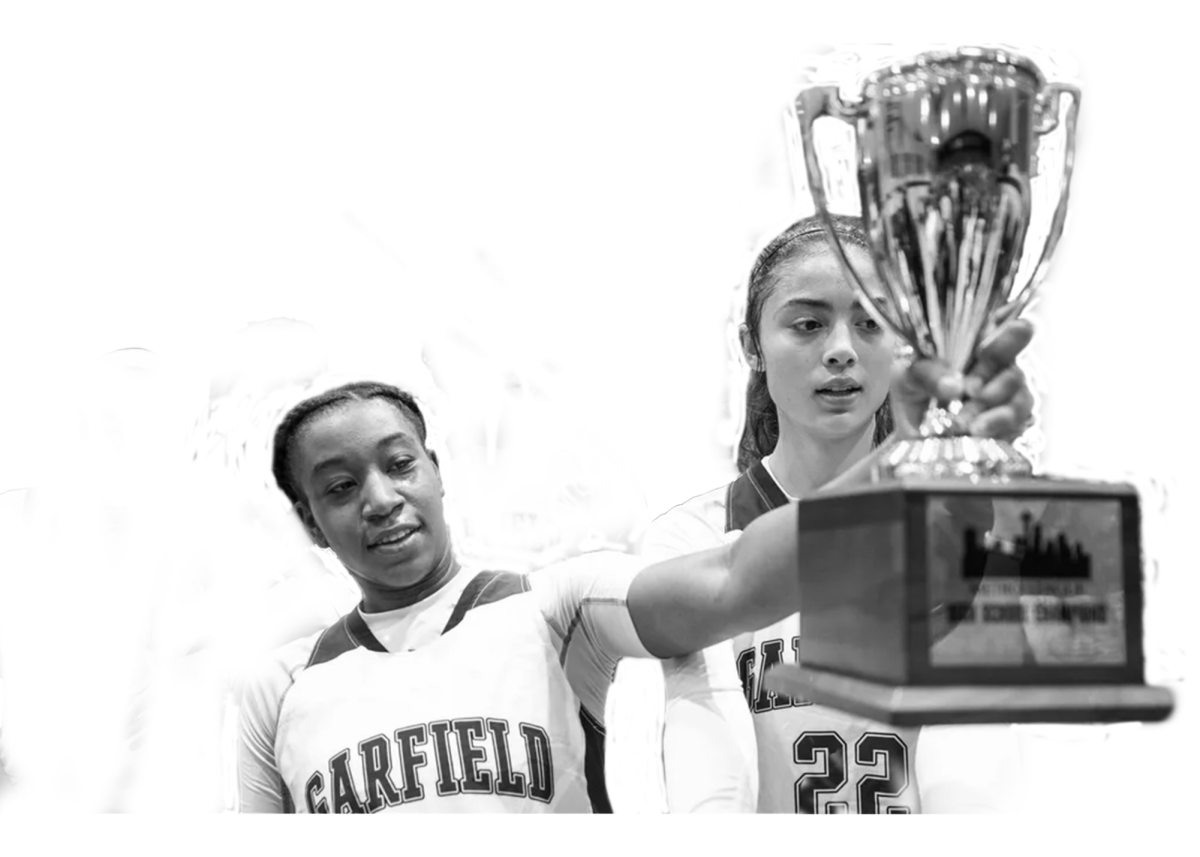On September 24th, Garfield principal Dr. Tarance Hart sent a letter to families explaining that both the girls and boys basketball head coaches had been released from their positions. While no reason was given for the change, Hart explained, “we are beginning a new chapter as we reset both programs, building on past successes while continuing to grow opportunities for our student-athletes—academically, socially, and athletically.” While the circumstances surrounding their release remain unclear, the success of the preceding coaches was undoubtable.
Brandon Roy served as Garfield’s boys head coach for most of 2017 through 2025, taking two brief sabbaticals during the 2018-19 and 2021-22 seasons. Under the direction of the former NBA All-Star, Garfield won three state championships in five years. The girls team, under Coach Roydell Smiley, shared similar success. Of the team’s four consecutive titles (a state record), Smiley coached the latest two to victory.
The future of Garfield’s athletic programs hinges on the reliability of consistent coaching: across high school sports, coaching changes happen often and for a variety of reasons. Most high school coaches are parents, teachers, or alumni who take on the role out of passion for the sport or a desire to give back to their community, rather than the monetary compensation. This can be a double edged sword; many coaches leave when their children graduate or when the demand of the job outweighs the rewards.
This turnover creates challenges, not only for the players, but for incoming coaches working to build continuity and habit within their programs. Garfield’s Athletic Director, Christopher Englund, emphasized the importance of stability in school sports, saying, “Culture takes time to build, it doesn’t happen right away … Trying to build it every year can be difficult.” Without knowing what motivates a team and the struggles student-athletes may be navigating, it can be difficult for instructors to connect with players and create team cohesion. Englund, also the coach of both the boys and girls golf team, has some advice to give to incoming coaches. “Make sure you really know the team you’re dealing with, so you can approach them the best way possible,” he expressed.
Volleyball is no stranger to an in-flux of coaches, having had eight different instructors over the past four years. These quick changes have left many players in the dark; “There was never an address…on why coaches were being let off or moving on,” Jessie Rhoades, varsity volleyball player, said.
These swift changes in leadership can create disconnection and a weakened team identity, “Giving us time to adjust would be my best advice.” Rhoads suggested. This experience underlines a much broader trend of how programs are upheaved when coaching staffs are changed.
The average US high school coach tenure lasts just one to two years—a time period most would consider too short to establish distinct team congruency. This frequent turnover can disrupt more than just game plans, affecting the emotional and psychological experience of student-athletes. “A good coach is really important in the way of boosting confidence,” Rhoads said, “playing high school sports is already such a taxing challenge.” Coaches do far more than just run drills and configure lineups. They can shape team culture, set expectations, and offer crucial guidance for incredible athletes who are, importantly, still only young adults. For many student-athletes, their coach is an adult figure who they can rely on, someone who may understand them better than some teachers or even parents. At Garfield, nearly 50% of students participate in at least one sport, according to the PTSA. Coaching’s significance in our community proves that maintaining consistent, supportive leadership is vital. A coach does not just offer skill, but stability to many student-athletes.
Tennis coach Katie Busby knows firsthand how difficult it is to step into a new coaching position. She joined Garfield’s tennis staff two years ago, after the previous coach left. “That first year was rough,” she recalled. “There wasn’t a system to onboard new coaches and [the previous coach] didn’t have any program set up to hand off to me.” Busby’s experience points to another major issue: a lack of infrastructure to support transitions. Most new high school coaches are often expected to figure things out on the fly with, at times, limited guidance or resources. “It’s tough to get people to coach high school sports because it’s such a short amount of time but it requires a lot of time when you’re in it,” Busby said. “So it’s not a very desirable position.” Despite the numerous challenges, she was able to find help, leaning on support from coaches and admin. Garfield’s community support network helped Busby, as well as the larger staff, navigate steep learning curves.
Unfortunately, this is not always the case. Countless high school coaches across the US are shoved into new teams with all of the same problems that Katie Busby faced, and flounder with no community support. It’s no doubt that schools who prioritize support for coaches tend to see stronger programs and better athletes, but oftentimes schools simply don’t have the funding or time to allocate to onboarding.
At Garfield, many players, parents, and fans are left wondering where sports in the same predicament as basketball will end up. Will the next coaches be able to live up to the success produced by Roy and Smiley? What will the future of Garfield basketball look like, both on and off the court? These questions remain unanswered, but one thing is clear: coaching changes, whether planned or unplanned, affect far more than just wins and losses.
Categories:
Coaching Carousel
Big coaching changes at Garfield.
More to Discover
About the Contributors
Rafael Brewer, Staff
Rafi (Class of 2027) is a junior and this is his first year on the Messenger. He is a sports addict, especially baseball, and spends his Septembers watching the Mariners fail to make the playoffs by one game… again. He enjoys writing about local school politics and stories, especially how school funding impacts Garfield students.
Hey my name is Luke, I’m in 12th grade at Garfield and it’s my first year on the Messenger. I like writing articles about sports, music, movies, and pretty much anything that I can find interest in, and enjoy playing soccer, sleeping, and watching movies. I’m excited to help keep my community informed and entertained.




